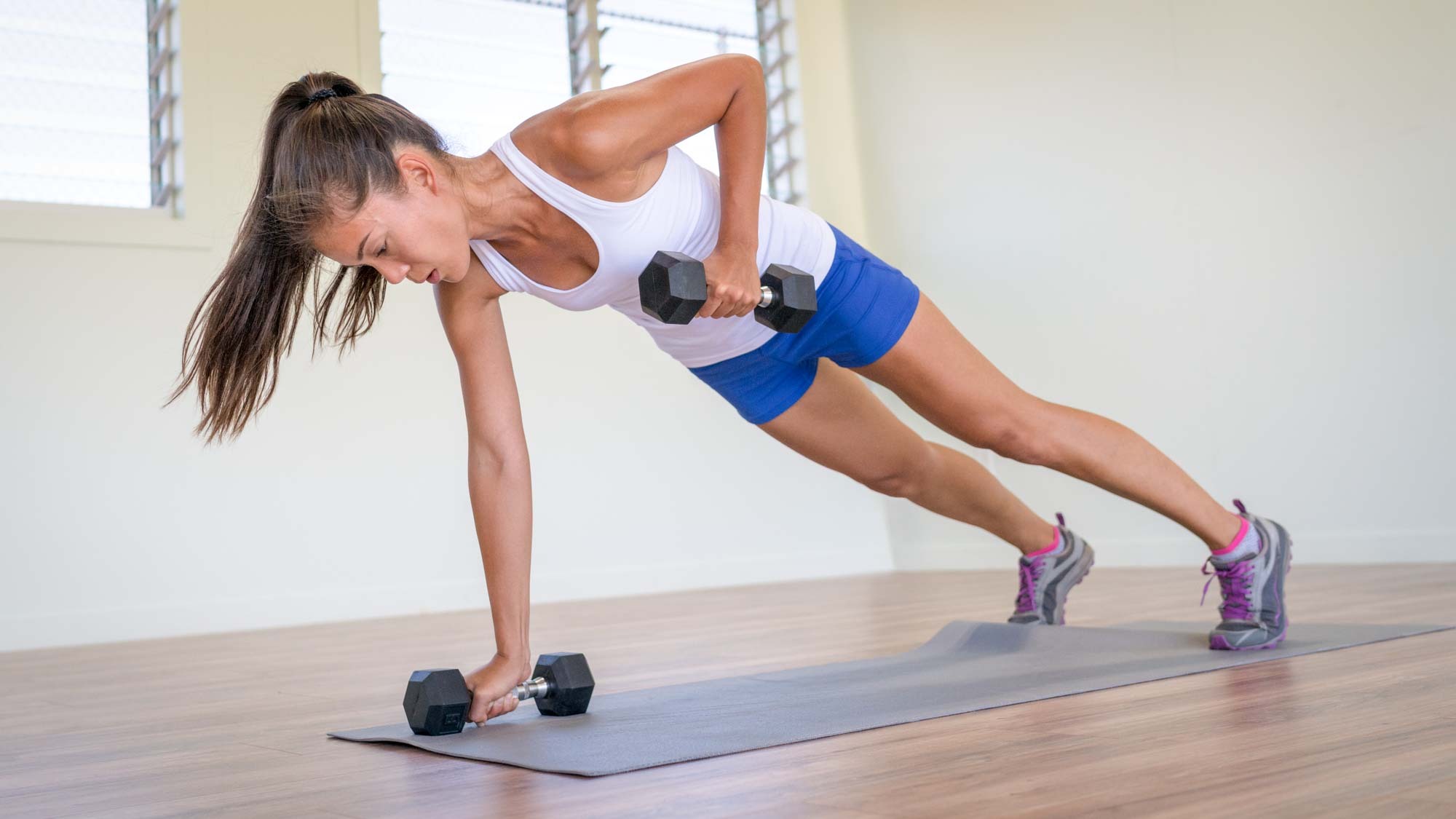
The renegade row fits well into most strength and conditioning programs, which is why so many people adopt it to strengthen the back and core muscles.
Rowing with weights from a plank position boosts cardiovascular fitness, strengthens muscle groups and builds core stability and postural control, and you only need light weights to see the benefits.
Although the move is known to hit your back and core muscles, you could also engage muscles across your entire body. To do it, simply hold two weights — this could include the best adjustable dumbbells or kettlebells — and row one arm at a time back from a high plank position. If you’re currently trying to work out how this looks, fear not, because we cover how to do renegade rows from beginner through to advanced level, the benefits and a variation to try.
Renegade row: Benefits
The move is in the compound exercise camp because it doesn’t isolate one muscle group, making it a great addition to functional training workouts.
Renegade rows strengthen the muscles responsible for posture, including your core, hips and lower back. The rowing variation also targets the deeper stabilizing muscles that help you balance and coordinate, as well as your back and biceps, during the pulling motion.
Famously, the plank exercise activates most muscle groups in your body using isometric contraction (without the muscle lengthening or shortening), so you get plenty of bang for your buck by squeezing as many muscles as possible throughout.
One of our fitness writers did 40 renegade rows a day for a week — here’s what happened.
How to do the renegade row

We recommend starting with light weights and only progressing if you can nail the move without swinging your hips from side to side or dropping them toward the floor. Avoid lifting your bum above shoulder height, and drive the elbow higher than your back.
How:
- Start in a plank position with a weight in each hand
- Engage your core
- With control, row one arm back toward your hip until your elbow is slightly higher than your torso, then slowly lower it back down to the ground underneath your shoulder to the starting position
- Switch sides
- Keep your hips square and avoid twisting your body.
Working one side at a time requires your body to work harder to keep you stable and prevent torso rotation. Try to consciously squeeze as many muscles as possible, including your glutes and quads, and drop your knees to the mat for an easier variation.
Start with 3-4 sets of 6-8 reps per side, increasing weight or reps as you build strength. For an example of how we use them, check out this 5-move compound exercise routine.
Renegade row: Variations to try
Dumbbell renegade rows are arguably most popular, but you could replace dumbbells with kettlebells, which are harder to keep stable on the floor, and even harder to actually row. Many people prefer to practice using knees before moving into the high plank position.
The best renegade row progression is to increase the load or add another exercise into the mix. You could combine one row per side with a burpee (here’s how to do a burpee properly) or devil’s press (see below) to make the exercise harder and introduce cardiovascular training during higher-intensity conditioning workouts.


If you don't have many weights available, another option is to row for longer. This adopts the time under tension method, making muscles work harder by slowing down the exercise.
During an unsupported single-arm row, slower movement challenges your body to stay balanced, which feels far more challenging to pull off.
Renegade row: Common mistakes
These are the most common mistakes we notice.
Swinging the hips
If the weight is too heavy, your hips will swing outward. Always keep your chest and hips parallel to the floor by squeezing your stomach, glutes and quads.
Limited row range of motion
You’ll notice a lack of back muscle engagement if you don’t row far back enough, and your arms will end up doing most of the heavy lifting. Renegade rows are a full-body exercise. If you could look at yourself side-on in the mirror, you should be able to see your elbow rowing above your back.
Aim for each row to drive toward your back pocket rather than your armpit.
Throwing the row
Throwing the weight back as you row means you’re lifting too heavy. The row should be controlled and smooth as you drive your elbow toward your hip, pausing at the top before you lower back down.
Remove the ego and lift a suitable weight. Squeeze your lats (the large muscles that run down the sides of your back), which ensures you get the proper engagement through your muscles and activates your back properly.
Throwing your arm back will encourage the body to twist outward, which takes away from the efficiency of renegade rows. To hit the muscle groups properly, it’s about controlled movement.







